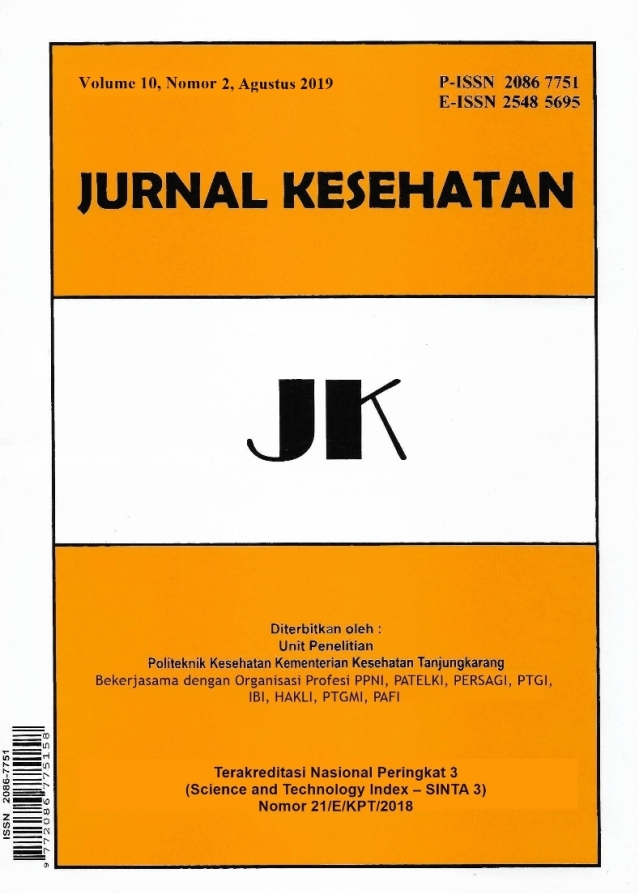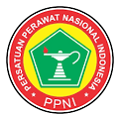Perbandingan Penyembuhan Ulkus Diabetik dengan Menggunakan Minyak Kelapa Murni, Madu, dan Produk Farmasi
DOI:
https://doi.org/10.26630/jk.v10i2.1238Keywords:
Honey, Ulcus Diabeticum, VCAbstract
The incidence rate of Diabetes in Indonesia is increasing every year. In as much as 8.7% of Diabetes sufferer, they suffer from diabetic ulcer, and 1,5% undergo body amputation. This condition reveals that the problem needs special attention to treatment. Some researches show benefit and effectivity of wound care with honey and virgin coconut oil (VCO) at some nursing clinics. Nurses and patients have a complaint on the high cost of pharmacy product for wound care available in the market. This research aims to compare 3 types of preparation for diabetic ulcer care. Those are VCO, honey, and pharmacy product, which the last is for group control. This research uses experimental quasi method to compare wound healing in 3 groups using 3 types of solution: honey, VCO, and pharmacy product. It involves samples, 11 respondents for VCO group, 10 respondents for the honey group, and 10 respondents for pharmacy product which serves as a control group. Analysis using dependent t-test proves that there is a score difference between wound care before and after treatment using all types of preparation. Analysis using independent t-test show that there is no difference in wound healing between using VCO and using pharmacy product, also, there is a difference among honey, VCO, and pharmacy product. This research recommends VCO preparation, which has benefit nearly equal to pharmacy product to be an alternative in wound care for rural residents with middle and lower-income.
References
Al-Waili, N. S., Salom, K., & Al-Ghamdi, A. A. (2011). Honey for wound healing, ulcers, and burns; data supporting its use in clinical practice. The Scientific World Journal, 11, 766-787. https://doi.org/10.1100/tsw.2011.78
Baruah, J., Roy, K. K., Rahman, S. M., Kumar, S., Pushparaj, M., & Mirdha, A. R. (2008). Angiokeratoma of vulva with coexisting human papilloma virus infection: A case report. Archives of Gynecology and Obstetrics, 278(2), 165–167. https://doi.org/10.1007/s00404-007-0539-6
Fatonah, S., Hrp, A. K., & Dewi, R. (2013). Efektifitas Penggunaan Virgin Coconut Oil (Vco) Secara Topikal Untuk Mengatasi Luka Tekan (Dekubitus) Grade I Dan II. Jurnal Kesehatan, 4(1), 264–270. http://poltekkes-tjk.ac.id/ejurnal/index.php/JK/article/view/10
Galkowska, H., Wojewodzka, U., & Olszewski, W. L. (2006). Chemokines, cytokines, and growth factors in keratinocytes and dermal endothelial cells in the margin of chronic diabetic foot ulcers. Wound Repair and Regeneration, 14(5), 558-565.
Gerlach, S., & Brem, A. (2017). Idea management revisited: A review of the literature and guide for implementation. International Journal of Innovation Studies, 1, 144–161. https://doi.org/10.1016/j.ijis.2017.10.004
Halim, D. S., Abdullah, N. A., Alam, M. K., Samsee, S. N. B., & May, T. S. (2014). Comparison of the effectiveness between virgin coconut oil (VCO) and triamcinolone for treatment of minor recurrent aphthous stomatitis (RAS). International Medical Journal, 21(3), 319-320. https://doi.org/10.1126/science.1184984
Intahphuak, S., Khonsung, P., & Panthong, A. (2010). Anti-inflammatory, analgesic, and antipyretic activities of virgin coconut oil. Pharmaceutical Biology, 48(2), 151–157. https://doi.org/10.3109/13880200903062614.
Jannah Tamara, A. H., Rochmah, Y. S., & Mujayanto, R. (2015). Pengaruh aplikasi virgin coconut oil terhadap peningkatan jumlah fibroblas pada luka pasca pencabutan gigi pada Rattus novergicus. ODONTO : Dental Journal, 1(2), 29–34. https://doi.org/10.30659/odj.1.2.29-34.
Kemenkes RI. 2014. Pusat Data dan Perkembangan Informasi Depkes RI. Jakarta.
Satheesh, N., & Prasad, N. B. L. (2013). OPTIMIZATION OF PARAMETERS FOR FERMENTATIVE PRODUCTION OF VIRGIN COCONUT OIL BY LACTOBACILLUS Sp. Annals. Food Science and Technology, 14, 312–317. https://doi.org/10.17265/2159-5828/2012.01.006.
Srivastava, P., & Durgaprasad, S. (2008). Burn wound healing property of Cocos nucifera: An appraisal. Indian Journal of Pharmacology, 40, 144-146. https://doi.org/10.4103/0253-7613.43159.
Zakaria, Z. A., Somchit, M. N., Mat Jais, A. M., Teh, L. K., Salleh, M. Z., & Long, K. (2011). In vivo antinociceptive and anti-inflammatory activities of dried and fermented processed virgin coconut oil. Medical Principles and Practice, 20(3), 231-236. https://doi.org/10.1159/000323756.
Downloads
Published
Issue
Section
License
Authors who publish in this journal agree to the following terms:
- Authors retain copyright and grant the journal right of first publication with the work simultaneously licensed under a Creative Commons Attribution License (CC BY-SA 4.0) that allows others to share the work with an acknowledgment of the work's authorship and initial publication in this journal.
- Authors can enter into separate, additional contractual arrangements for the non-exclusive distribution of the journal's published version of the work (e.g., post it to an institutional repository or publish it in a book), with an acknowledgment of its initial publication in this journal.
- Authors are permitted and encouraged to post their work online (e.g., in institutional repositories or on their website) prior to and during the submission process, as this can lead to productive exchanges and earlier and greater citations of published work.












